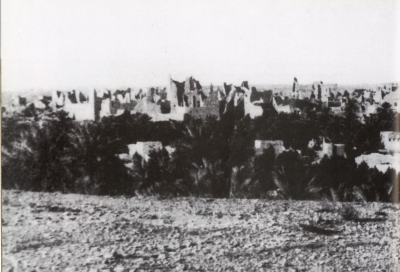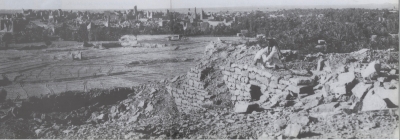
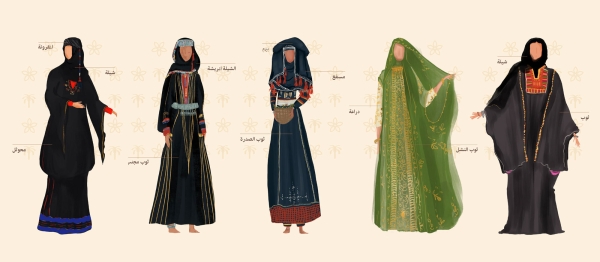
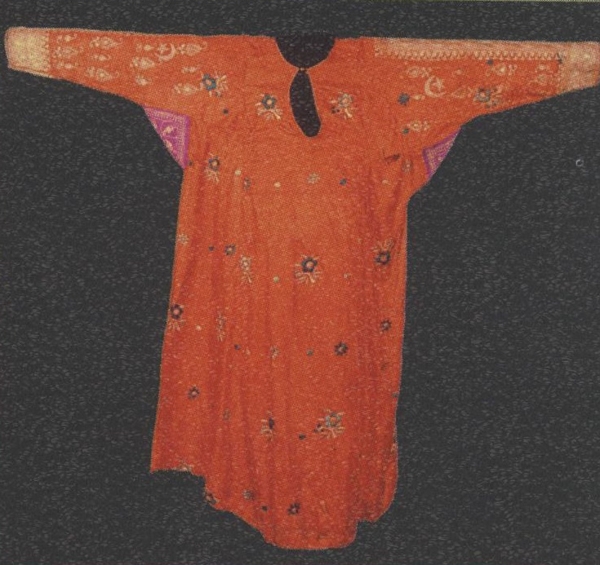
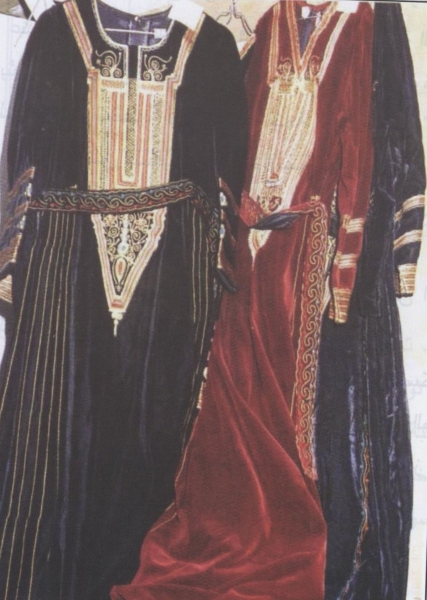
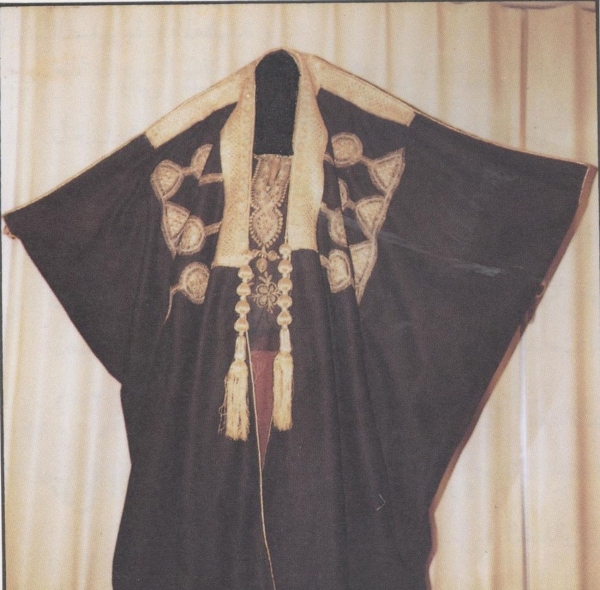
Women's garments in the First Saudi State refers to the clothing worn by women during the era of the First Saudi State, which was characterized by its various colors, designs, and fabrics, depending on each region.
Garments can be divided based on their style and the environment from which they originated according to the five main regions in the First Saudi State: the central region, the eastern region, the western region, the southern region, and the northern region.
Women's garments in the central region of the First Saudi State
Women in the central region of the First Saudi State wore different pieces outside the home, which are:
Al-Mukhnaq: For young girls, it is a sheer silk fabric made of chiffon or tulle, sewn completely except for an opening around the neck to reveal the face.
Al-Ghadfah: It is the shawl worn by women to cover their heads, made of light tulle fabric, and is also referred to as "al-Munaykhel."
Al-Ghatwah: It is a black fabric used to cover the entire face.
Al-Burqa: It is a cover for the entire face except for an opening for the eyes, and it is decorated with some ornaments.
Al-Abaya: It is made from coarse wool, cut in a rectangular shape and folded on the sides from the front, leaving a gap between the edges so that they meet. This gap is called "al-Jayb," and it is where abaya is placed on the head. Al-Abaya does not have sleeves, but small openings for the hands at its ends. Some types of abayas include the Qilani abaya, the Ma’simah abaya, the Dufat al-Mahoud abaya, the Fisol abaya, and the Murshidah abaya.
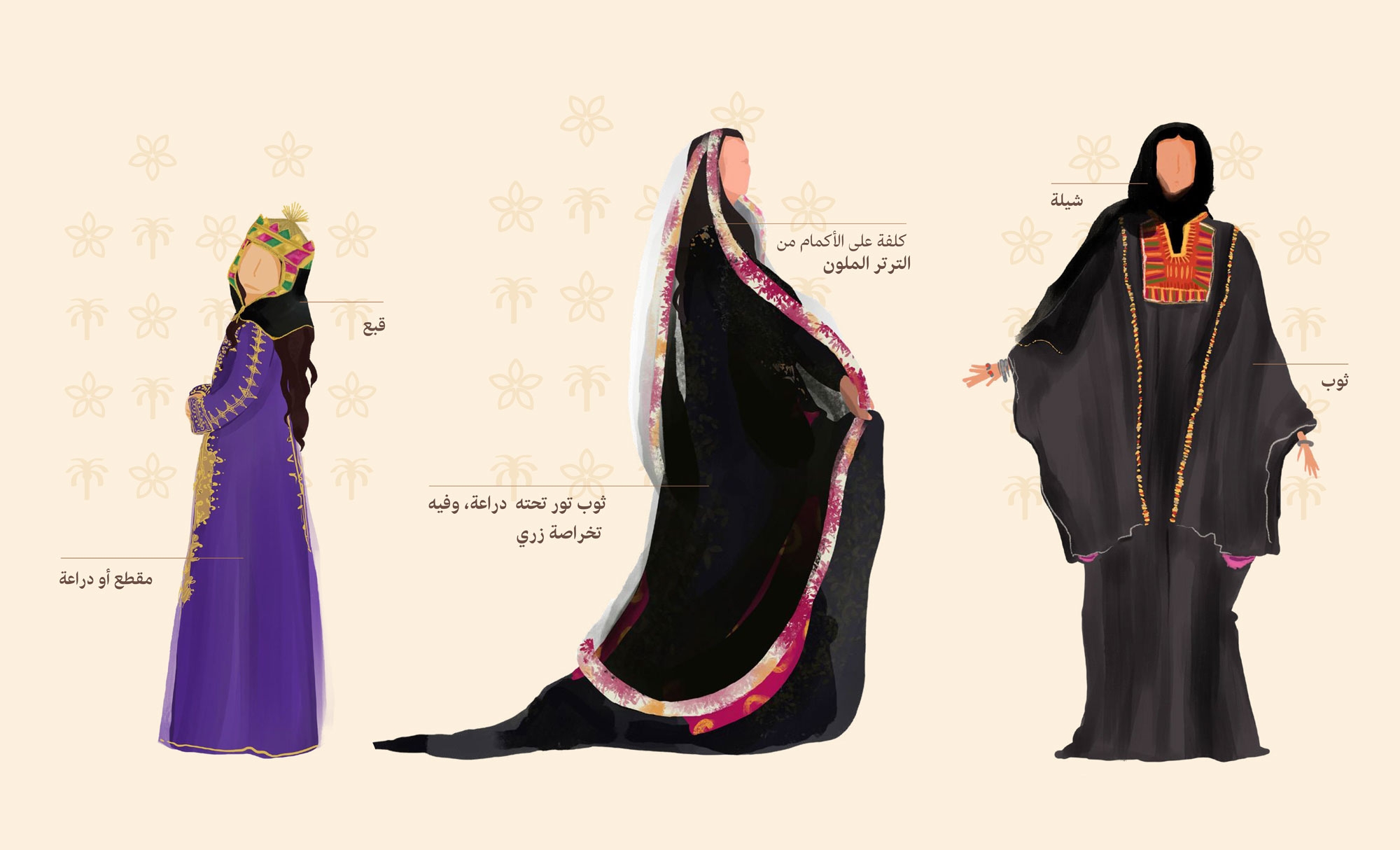
As for women's garments in the central region at home, they are:
Al-Maqta' (al-Daraa): It is a wide, long garment with long, wide sleeves that narrow at the wrist. It is made up of several parts, including: the body, the bunayqa, the sleeves, the takhrasa, the neck opening, the khabnah, and the makhbaha. The types of maqata' vary according to the method of tailoring, the fabric name, and the country of origin. These include: the Zari maqata', the Mu'addad (al-Mutaffat) maqata', and the Umm 'Asa maqata'.
Gown: It is an upper garment worn over the maqata' and is characterized by its length and wide fit, giving it a square shape. It is made from delicate, sheer fabrics, usually chiffon, tulle, or lace. It consists of the same parts as the maqata' and can be worn in several ways, such as placing the neck opening over the head, or crossing the sleeves over the head from the back, or simply wrapping one sleeve around the head. The gown is embroidered with floral and geometric patterns using gold and silver zari threads, as well as sequins. It has several names, including al-Tur or al-Munaykhel, al-Mutaffat, al-Mukhatam, and al-Masrah or al-Nashl.
Women's garments in the eastern region of the First Saudi State
Women in the eastern region of the First Saudi State wore different pieces outside the home, which are:
Al-Malf'a: It is a rectangular piece, 2-3 meters long, made from light cotton fabric in black color, often crafted from light tulle. It is wrapped around the face to cover the head, shoulders, and part of the face when leaving the house. It can also be used as a separate cover called (al-Bushiya), which is usually secured with a metal piece called (al-Rubayi). To decorate the malfa, thin metal plates called (al-Naqda) are attached to the holes in the malfa. The bride wears the (Naqda Malfa) on her wedding night.
Al-Batulah: It is a face cover except for the eye openings, and it refers to the 'burqa'. It is usually worn by older women. It is made from heavy fabric dyed with indigo and lined on the inside. It is decorated with gold coins called 'Risi'.
Al-Abaya (al-Duffah): It is a wide and loose robe worn over the entire body starting from the head. The abaya does not have sleeves; instead, it has two small openings at the right and left corners, allowing the hands to pass through. It is cut in the width of the fabric, not its length. It was traditionally made from various types of wool, such as al-Marina, al-Mahoud, and al-Wanishin, and later included other fabrics such as silk, known as al-Habar, and crepe. Its edges and borders are decorated with cord and golden or silver zari threads. The front of the abaya hangs down on both sides with folds called Karkushah. Some types of abayas include the Umm Samakah abaya, and the bride often wears the Duffah al-Mahoud abaya on her wedding night.
Al-Rida: It is a garment from the Qatif region and its surrounding villages. It is a rectangular piece of black fabric, decorated with horizontal lines on both sides, predominantly in dark red. It is adorned with zari threads and is wrapped around the woman to cover her entire body. It is usually brought from Bahrain, and there are types specifically for special occasions, called al-Tarmali. One of the types of al-Rida is al-Mushammar.
Al-Mukhnaq: Worn by young girls, it is a sheer silk fabric made of chiffon or tulle, sewn completely except for an opening around the neck, which is intended to reveal the face.
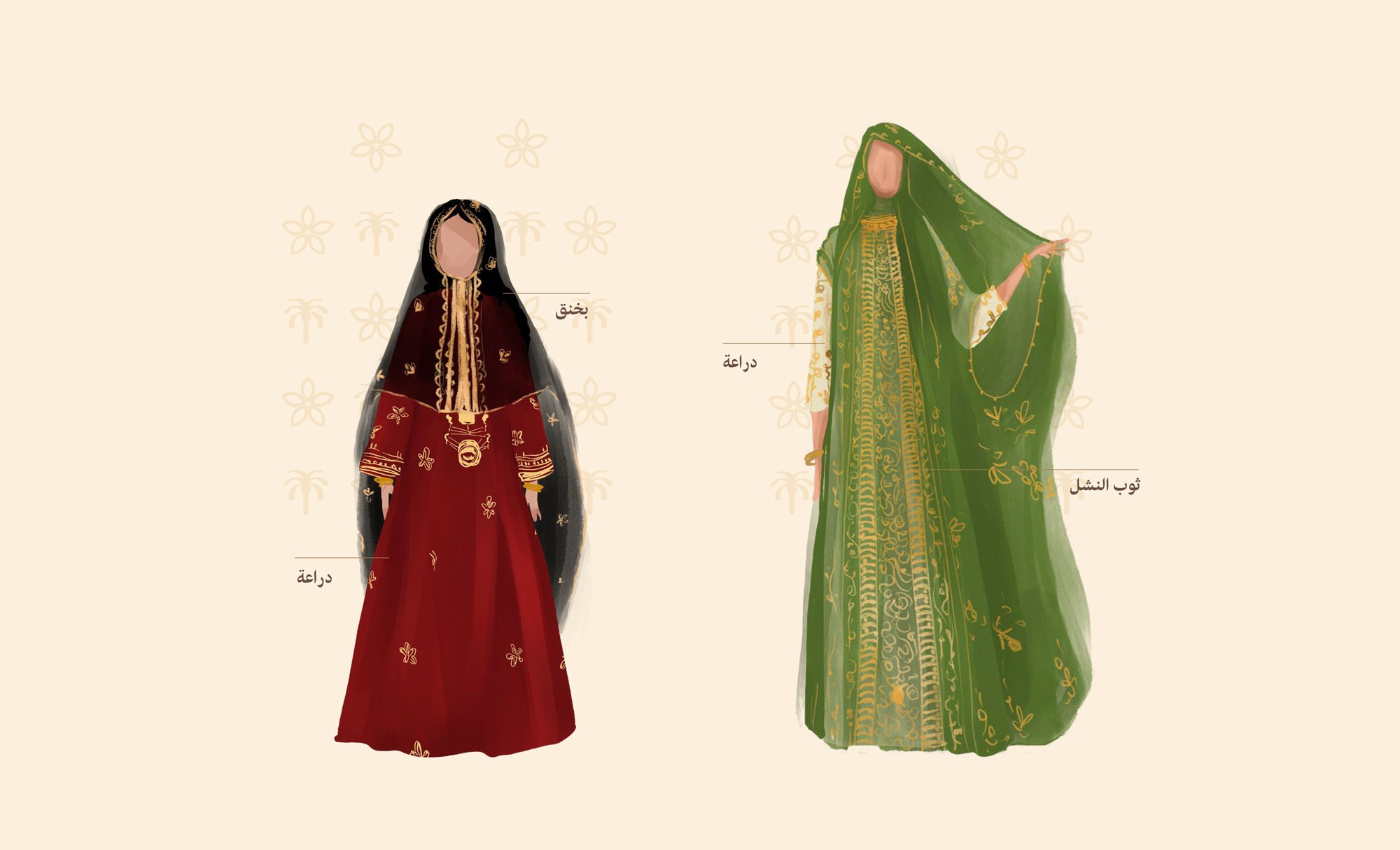
As for women's garments in the eastern region at home, they are:
Al-Daraa: It is a loose, long garment with long sleeves, consisting of the side piece (al-Tanafajah) and the sleeves. The tail has a fabric strip of a different color than the daraa, which is added to the hem of the tail. The names of the daraa vary, including: Daraa Umm 'Asa, Daraa Mufahhah, Daraa al-Zari, Daraa al-Mu'addad, and Daraa Bambawiyah.
Al-Nafnof: It is one of the garments that appeared with the evolution of fashion, replacing the daraa for women. It is tailored with a cut that defines the waist from the top and begins to widen toward the bottom. The lower part consists of large or closely spaced pleats. The nafnof is embroidered with zari threads and silk.
Gown: It is an upper garment worn over the daraa and is characterized by its length and width. It resembles the Najdi gown with slight differences. It consists of the same parts as the daraa. Its names and types vary depending on the embroidery or fabric used. The eastern gown is generally smaller in size compared to the Najdi gown. There are several types and names for the gown, including: al-Thuraya, al-Naqda, al-Nashlo, and al-Mufahhah.
Women's garments in the western region of the First Saudi State
Women in the western region of the First Saudi State wore a number of garments that were distinguished by their various colors and designs, which are:
Al-Mizand: It is a tight garment with embroidery on the chest, sleeves, and sides of the garment.
Al-Zubun: It is made from satin fabric or Indian silk.
Al-Kurtah: The neck opening comes in various shapes, and the lower edge of the garment is wide. It is made from fine cotton fabric in the summer, while in the winter, it is made from sturdier fabrics such as poplin and chintz, which is a printed cotton fabric. Bright silk fabrics are reserved for young girls.
Al-Arabi Gown: It is a wide, long garment made from lightweight fabrics.
Al-Masdah Gown: It is a loose garment made of five pieces that are sewn together. It is made from plain or patterned fabrics, and the sizes and decorations vary from one region to another.
Al-Mizand Gown: It resembles a men's garment, but it is more spacious, with narrow embroidered sleeves. It is made from two types of fabrics: black satin and navy blue dobelin.
Al-Aswad Gown: It is a wide garment with sleeves that reach the ankle, made from sheer fabric, and is worn with other complementary pieces.
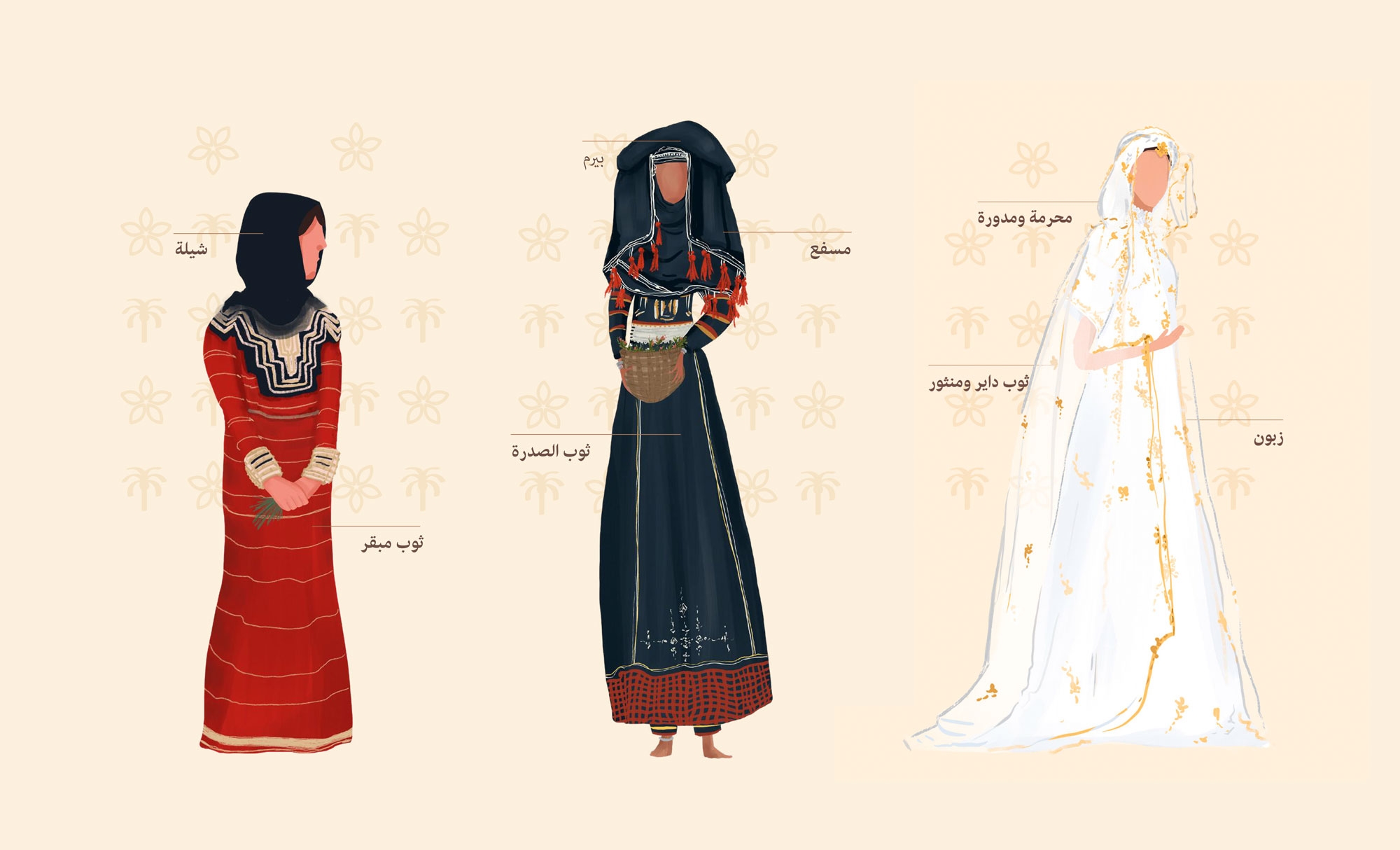
Al-Dook Gown: It is a loose garment, wide at the bottom, named after the fabric used in it (Duq Abu Miftah), which is a fabric similar to satin.
Al-Mubqar Gown: It is a wide, long garment that is tight at the top and wide at the bottom, with sleeves that gradually narrow until they end with a cuff (fold) at the wrist. It is made from plain cotton fabric.
Al-Maqta' or al-Mudra' Gown: It is a garment made from plain cotton fabric and decorated with embroidery.
Al-Sadra Gown: It is a wide, long garment made from cotton, decorated on the chest, back, sleeves, and bottom of the garment. The neck opening is rectangular, and dyeing is used in its decoration.
Al-Sawn Gown: It is worn on special occasions and celebrations. It is a rectangular-shaped garment, tight-fitting, with a round neck opening.
Al-Masdar Gown: It is made from cotton fabrics, and the garment is heavily embroidered on the shoulders or at the bottom. Some versions may be without any decoration.
Women's garments in the southern region of the First Saudi State
Women in the southern region, during the time of the First Saudi State, derived their garments and head coverings from the materials and resources available at that time. Their clothes were adorned with a variety of colors, including red and black. These were garments worn both inside and outside the home, and they include:
Al-Sidrah: It is characterized as a long black garment embroidered in various colors, with long sleeves. It has other names, including: al-Mahbuk, al-Mukallaf, or al-Mutaraz.
Al-Kurtah: It is made from striped fabrics or in black color.
Al-Jaljalān: It is a light fabric that has patterns resembling sesame seeds.
Al-Hawkah: It is worn over some garments, a white piece that women drape over the shoulder to cover the chest and lower part. It resembles the Indian sari.
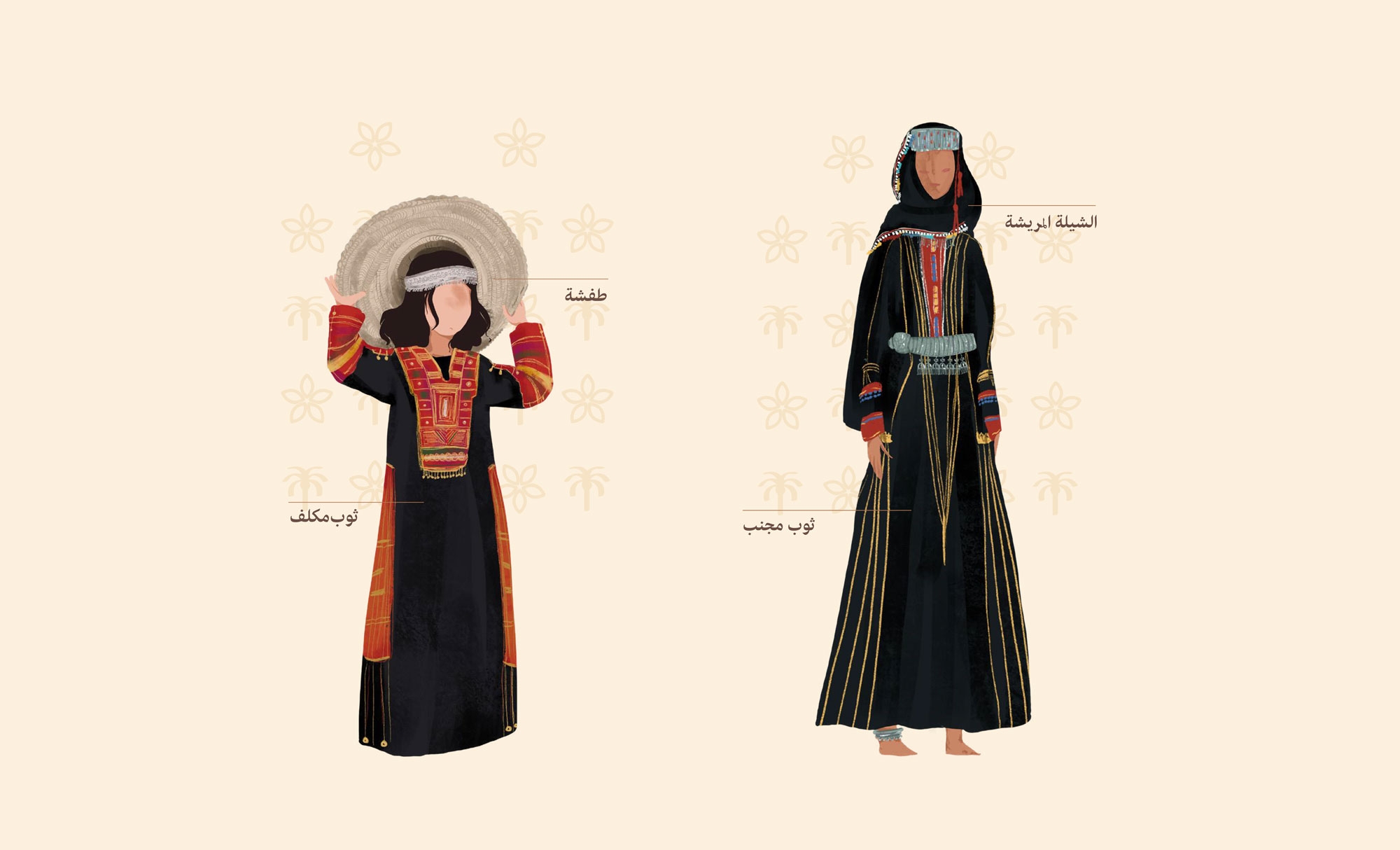
Al-Mukammam: It is a black garment made from al-Taqah fabric, worn by women over another garment. It is wide at the bottom and narrows as it rises toward the waist, with very wide sleeves.
Al-Majnab: It is the piece added at the top of the thigh to increase the width of the garment. It is embroidered on the chest, sides, and sleeves with colored silk threads.
Al-Mizandah: It is made from colorful fabrics with beautiful patterns, and features a fitted waist and tight sleeves.
Head coverings included a variety of garments, such as the black Shilah (shawl) made of fabric adorned with colorful edges or beads, and secured with other fabrics in yellow or red, or by a band of the same type. Additionally, aromatic scents or powders, like al-Tayb al-Mahlabi (a special perfume), are placed at the edges of the Maqlamah (a black garment). The edges of the Maqlamah are sewn in a square shape. The Qata'ah, a black garment, is worn under a type of fabric called al-Misr.
Women's garments in the northern region of the First Saudi State
Women in the northern part of the First Saudi State wore a variety of garments in different colors and fabrics, and some of their garments worn outside the home include:
Al-Abaya al-Mazwiyah: It is characterized by its black or dark brown color made from wool. It is worn over the head, cascading down to the feet, with tight sleeves that cover both arms up to the wrists. Meanwhile, the bride wears an Abaya called al-Murshidah, which is embroidered with gold zari threads and made from soft wool. The front opening of the Abaya has tassels covered with zari threads on both sides.
Al-Duqlah or al-Zubun: It is a garment open from the neck to the feet at the front, and open on the sides. The upper part of the neck to the middle is closed with buttons made from the same fabric. The finest fabric used to make it is velvet.
Al-Shilah made from black silk or lightweight cotton, while young girls wear the Shilah in red. They would wrap their heads with a headband woven from loose fabric, or with al-Maqrunah, which is a black scarf folded from the center into a triangular shape.
Al-Jubbah: It is a short blue coat with tight sleeves, made from al-Mahood cloth. There is also the Shambar, which is a black-dyed cover, more than three meters long and half a meter wide. Some women prefer to leave about 6 cm at the ends to place red ribbons.
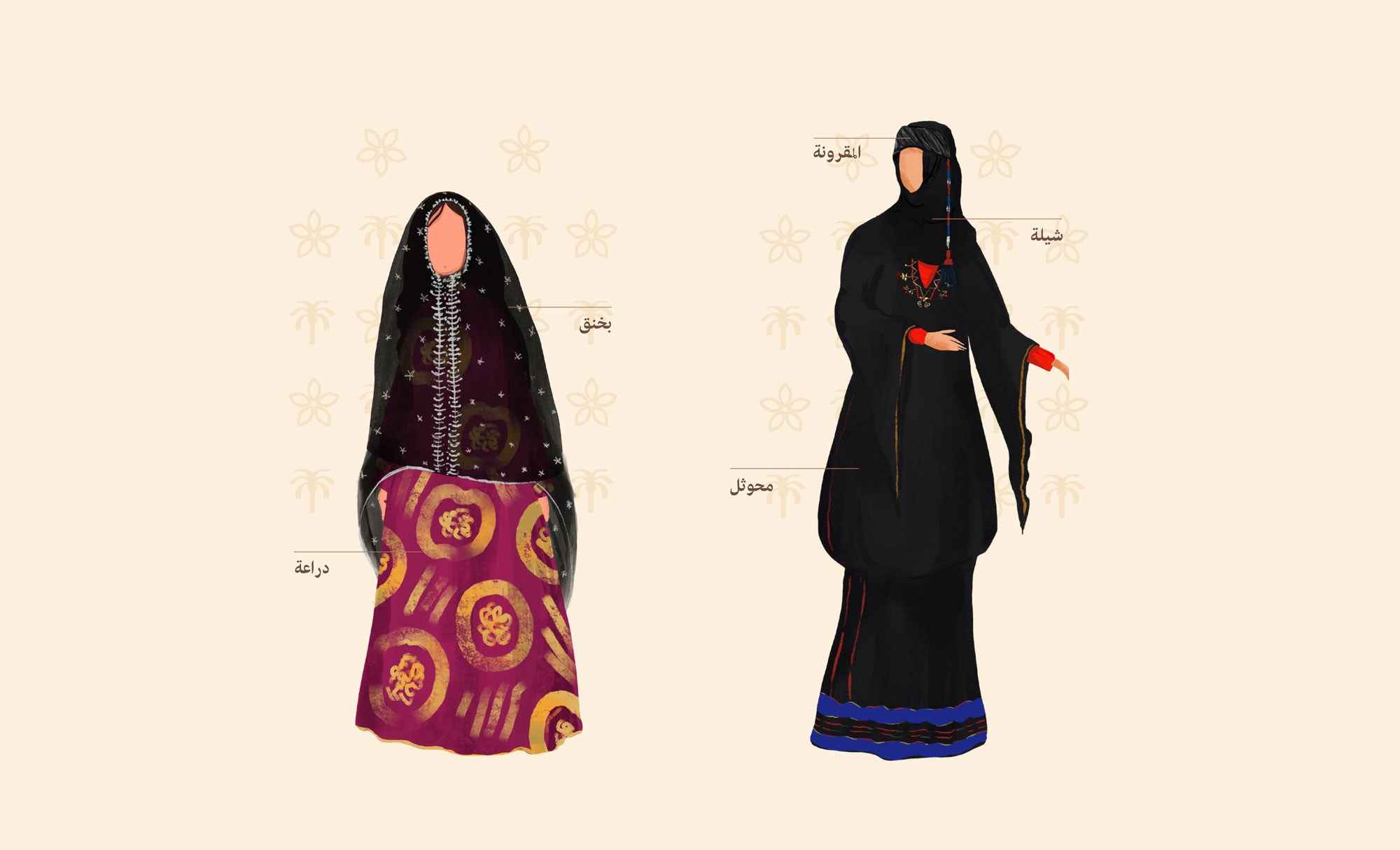
Women in the urban areas were known for wearing the Daraa, a loose garment with long wide sleeves in various colors such as crimson and orange. They also wore al-Murudan, a garment characterized by long triangular-shaped sleeves that hang down to the ground, available in multiple colors and various decorations. The most common garment was the Maqta', a long and wide dress with a circular neck opening, worn over al-Mufraj with square-shaped sleeves, known for its very loose fit. The Kurtah represents the evolved version of the Maqta' with stitching around the waist.
In the northern desert of the First Saudi State, women wore al-Huthal, which was their main garment. It is characterized by its length, and the name is derived from al-Hathl, meaning to fold the garment, as they would fold it at the waist and tie it with a belt woven from wool or black or red cotton threads. While doing work, they would wear a loose garment over al-Huthal, reaching down to the ankles, with long sleeves, called al-Mudraqa or al-Sharsh. The Jubbah was also part of their clothing, with another name being Damer. During celebrations and special occasions, they would wear the decorated al-Zubun, which resembles the Jubbah but is longer and has a simpler, undecorated design suitable for work.
Related quizzes
Related articles
